Welcome back, students of pool! Today we tackle a shocking subject, in the following discussion about pool shock treatments.
What is shocking the pool? For the unfamiliar, the noun ‘shock’ refers to an oxidizer used for sanitizing and disinfection of pool water. The verb ‘shocking’ the pool is the act of adding granular pool shock to super-chlorinate the pool.
In small doses, pool shock can be used to quickly raise chlorine levels, spot treat a small algae colony or remove organic stains on concrete pools. In larger doses, pool shock will restore green pools, break apart chloramine bonds, and kill bacteria.
As a Complete Guide to Pool Shock, today’s lesson plan will compare the types of pool shock available, their pros and cons, and application and dosage information. But first…
Why Shock a Pool? Raising the chlorine level 10x-30x normal levels, or using non-chlorine shock oxidizer, can accomplish many things simultaneously.
- Removes visible algae in the pool.
- Removes invisible bacteria in the pool.
- Removes chloramines and other disinfection byproducts.
- Removes cloudy water by oxidizing suspended particles.
- Removes organic and inorganic contaminants.
- Maintains healthy, sanitary pool water.
When to Shock a Pool? The time of day matters, and you want to be consistent. Regular pool water oxidation improves water appearance, quality and sanitation.
- Shock the pool when the sun is not shining on the pool; early or late in the day.
- Shock as needed to correct water conditions, or every 2-4 weeks.
How to Shock a Pool? There are some techniques to proper pool shocking; in addition to the tips below, consult the pool shock label for use and precautions.
- Clean the pool before shocking, to remove leaves or debris.
- Lower the pH level to 7.2, to increase pool shock potency.
- Sprinkle shock into pool, or broadcast across the surface.
- Vinyl pools should pre-dissolve in a 5-gal bucket of water.
- Run the filter and brush the pool afterwards to disperse.
- Use the entire bag at once; clean up any spills quickly.
SWIMMING POOL SHOCK TREATMENTS
Calcium Hypochlorite
The most popular pool shock, beloved for the low cost, high percentage of available chlorine, and stable pH. Cal Hypo pool shock is sold in bags, bottles and also loose in buckets. Cal Hypo is not stabilized, so it won’t add to cyanuric acid levels, but it will add a small amount of calcium to the pool. Granules dissolve quickly, but not instantly; pre-dissolve in a bucket of water when adding to vinyl liner pools.
- Strength: 65% Pool Shock, 68% Granules, 73% Super Shock
- Dosage: 1 lb. per 10000 Gals, adds 9-11 ppm depending on strength
- Quantity: Sold in 1 lb. bags, bottles, or in 25 lb. and 50 lb. buckets
- Rating: 4.8 Stars on 304 reviews
- Cost: $2.60/lb to $3.60/lb
Sodium Hypochlorite
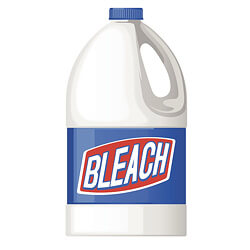
Liquid chlorine can’t ship by UPS/FedEx, but we can truck ship a case of 24 Gallons. Chemically identical to household bleach, pool liquid chlorine is typically a higher strength of 12.5%, compared to 5% concentration of regular bleach. Liquid chlorine is quick acting and leaves no residue, but has a very high pH of 13, and can be hazardous to transport and store. Pour directly into the pool for shocking, or use daily with a pool chemical pump to administer small doses all day long.
- Strength: 5% Household or 12.5% Commercial Bleach
- Dosage: 1 Gal. per 10,000, adds 7-14 ppm, depending on strength
- Quantity: Sold in 1-Gal bottles, 5-Gal drums or delivered to 50-Gal vats
- Rating: n/a
- Cost: $3-$6/Gallon, depending on strength and size
Sodium Dichlor
Dichlor pool shock such as our Di-Zap Multi-Shock, is a neutral pH, stabilized form of chlorine granules. Di-zap will last longer in bright sun, and contains no calcium for those with high hardness levels. Used monthly, there is no need for separate additions of cyanuric acid to the pool. Often used in saltwater pools or in pools with mineral or UV systems, or any pool that does not use stabilized chlorine tablets.
- Strength: 56% Available Chlorine
- Dosage: 1 lb. per 10000 Gals
- Quantity: Sold in 1 lb bags and in buckets
- Rating: 4.5 Stars on 14 reviews
- Cost: $4-$6/lb
Potassium Monopersulfate
Non-chlorine shock, MPS has a fine granular texture that dissolves immediately, and won’t affect pool pH levels. Leaves no residue or binders behind, and you can swim immediately. Chlorine free oxidizer has 4.5% of active oxygen, to destroy bacteria, chloramines, ammonia and clear cloudy water. MPS can be as effective as chlorine shock for any use, with exception to extreme algae or bacteria conditions.
- Strength: 38% MPS
- Dosage: 1 lb. per 10000 Gals
- Quantity: Sold in 1 lb bags
- Rating: 4.8 Stars on 111 reviews
- Cost: $2.68/lb to $3.66/lb
Pool Perfect Plus Phos Free
Not a shock treatment, but a unique way to reduce the need for pool shock treatments. Natural Chemistry has blended their most popular pool enzyme Pool Perfect plus PhosFree, to reduce chemical demand for any pool, eliminate algae and continuously clean your pool filter. Enzymes remove organics and oils from the water and filter, while the PhosFree removes phosphates that literally starves algae into submission. Regular use will reduce your need to use pool shock.
Other ways to reduce the need to shock a pool include maintaining impeccable water balance, a consistent and constant chlorine residual, and running the pool filter long enough each day to manage the continual inflow of particulate matter.
If you find that you need to shock every week, or the pool just isn’t clear without regular shock treatment, you may look at your water balance, circulation or filtration – there may be performance issues there, requiring more pool shock as compensation.


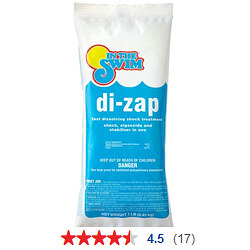


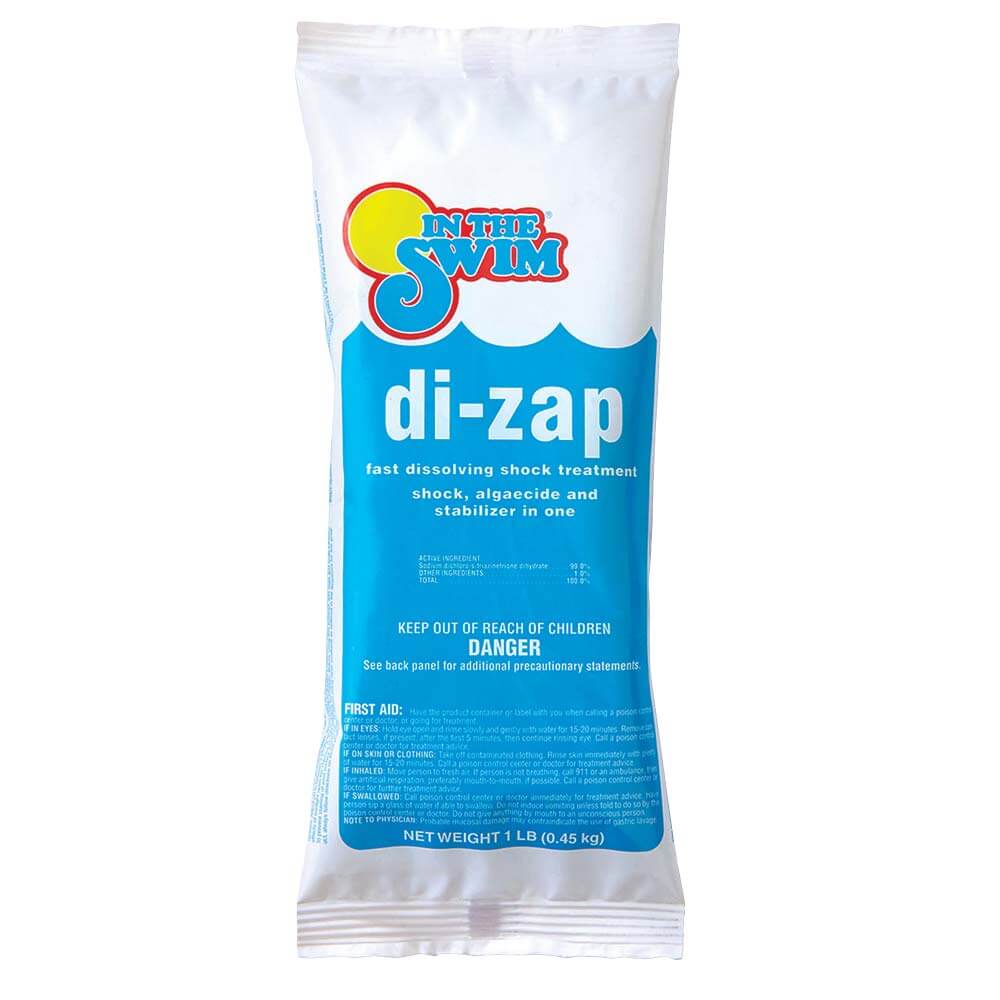


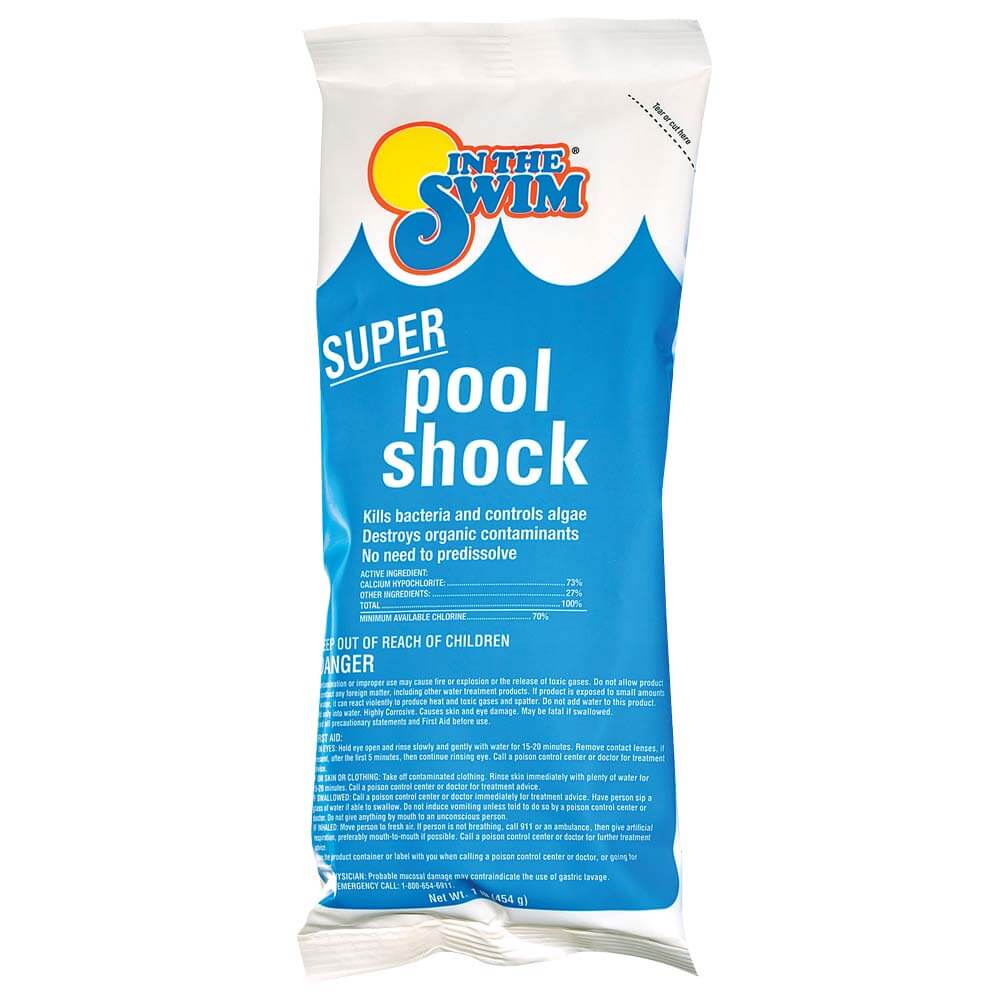
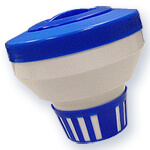
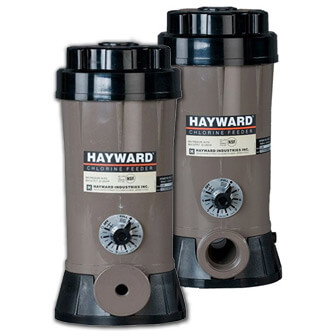



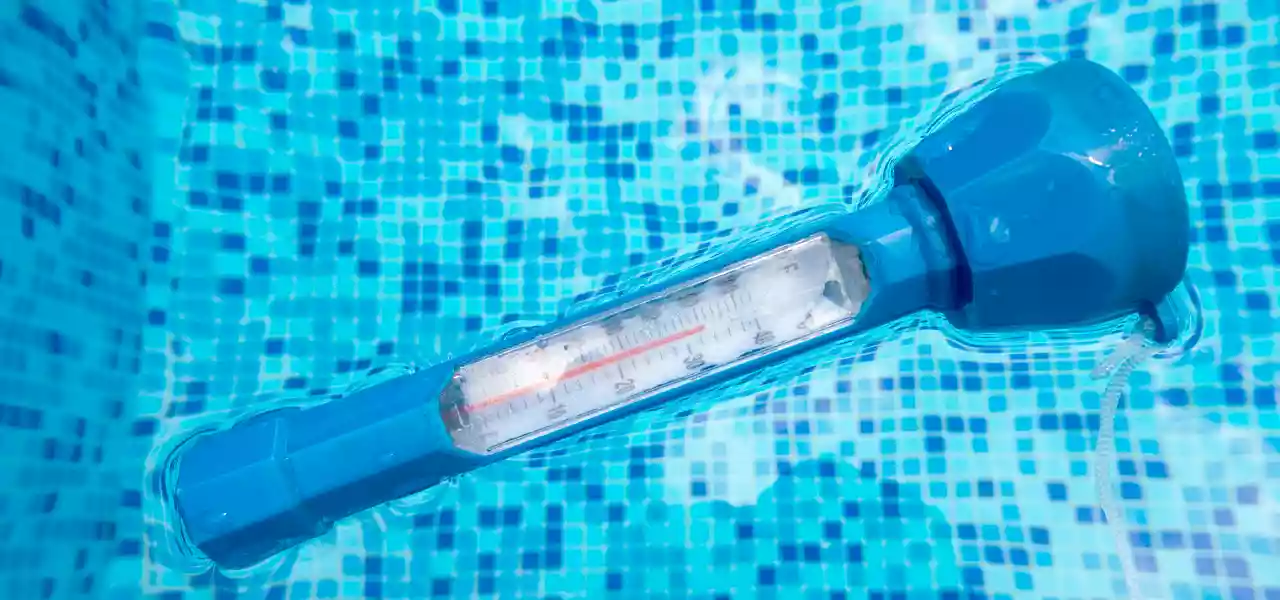
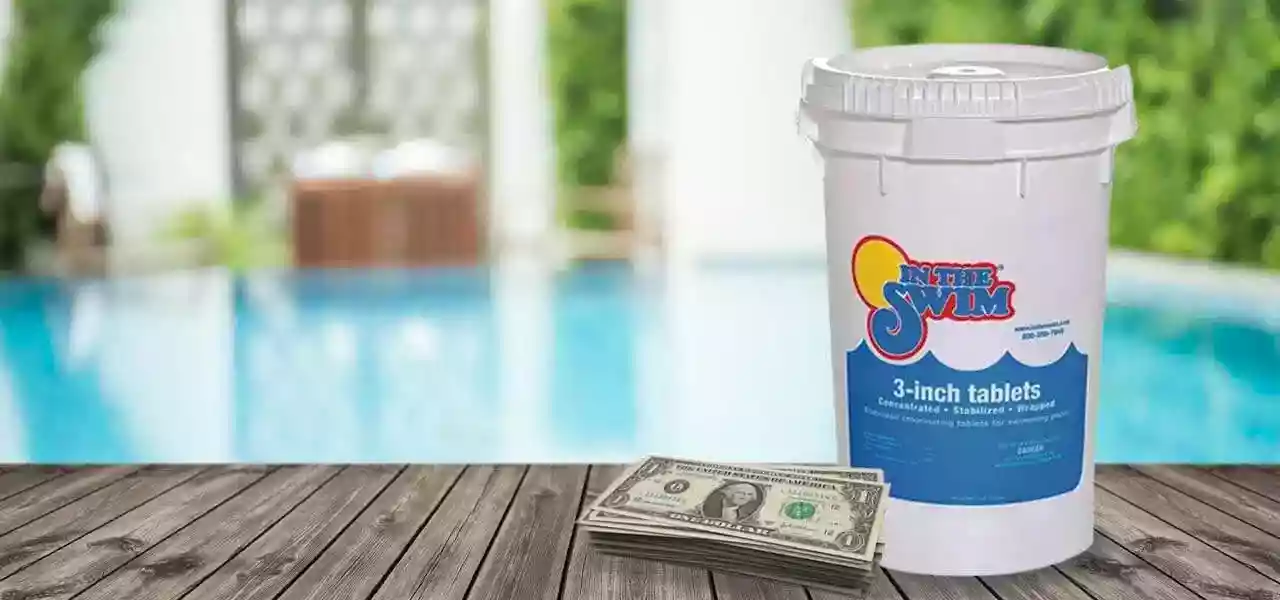
I’m on Baquacil and my pool has turned green in this hot summer weather. Which of your products can I use to shock my pool? I can not use any chlorine products.
Hi Ron, we carry AquaSilk, which is a biguanide that is similar to Baquacil. We have a Shock Oxidizer, Sanitizer and Algaecide available. https://www.intheswim.com/p/aqua-silk
I found this helpful. I still do not know if I can use di-chlor shock instead of non chlorine shock in our above ground pool. For some reason non chlorine shock is getting hard to find anywhere around locally. We have a salt water system by the way,which is why I am asking. Thanks so much for your time.
Hi Teresa, yes you can use Di-Chlor shock, Cal Hypo shock, or non-chlorine shock with a salt system, which of course is a chlorine system, and produces the exact same chlorine as tablets or any chlorine shock – hypochlorous acid. The difference between Dichlor and Cal Hypo is that Dichlor is stabilized, it has a bit of cyanuric acid added, so it lasts longer in bright sun, as compared to Cal Hypo – but Dichlor (56% available) is also about 10-20% less potent, compared to Pool Shock (65% avail), or Super pool shock (73%). Non-chlor shock is a good choice for almost any shock task, with one exception, killing out of control algae blooms, where chlorine shock is better.
Hello, I have the same issue. We have green water – normal alkalinity, low PH, high calcium,(doesn’t resister on Taylor Test strips over 100) and combined chlorine for a 21,000 gallon pool. As new pool owners we’ve been to 2 pool stores for advice – have shocked several times over 4 weeks most recently adding 33lbs over the past few days until (keep adding & brushing pool until we see free chlorine)
I’m convinced the chlorine is just not working and that we’ve ruined the water and will need to drain the pool by half and start over. Is it possible to reverse if we’ve been doing it incorrectly all along?
Hi there, sorry for such troubles! If you are able to drain half and refill, that often makes things easier. Water is a lot cheaper than chemicals, I like to say – and for pools that haven’t been drained in years, or are not regularly diluted by rains and winterization, they can become choked with all sorts of gunk that interferes with sanitation and water balance. There is something in the water that is consuming the chlorine and creating high chloramines. It’s not the calcium level, but something organic in the water. Drain the whole pool if you can! Vinyl or fiberglass pools should not be drained fully if possible, but can be drained to within 3″ of the shallow end floor, then refilled, then 1/2 drained again if needed. You can use a Pleatco Pre-Filter on your garden hose, if your source water is high in minerals, metals, chloramines, etc…
Thank you for the advice – I wish we had done this weeks ago! We have a gunite pool (safe to drain) put a pump in last night and 12hrs later about half of the water is gone. Do you think draining by 2/3 it will be enough or do we really need to drain entirely?
Hi – hard to tell if you need to drain it completely, but if your fill water is of good balance, 2/3 will probably do the trick.
Help! Our pool was green when we opened it! It is 15×24 and we had the water tested at our local pool store and we’re told to shock it and add chlorine. After no chlorine showing up, we had it tested again and we’re told to add more shock. We have now added 32 pounds of shock in 5 days and our pool is still green with no chlorine showing up. We have also been running the pump 24/7. Please any thoughts, suggestions would be greatly appreciated. Thank you.
Wow – that’s a lot of shock! I assume that the other water balance is good, ph, alkalinity, etc… there is something that is ‘eating’ the chlorine as fast as you can add it – you may want to have the water tested for phosphates, or maybe they did that? For levels over 300 ppb, a phosphate remover can be added, which could help. In other cases, the level of algae is just too severe for the amount of shock added. Be sure the pH is low before shocking (7.2-7.4), and add enough to reach over 30 ppm – which is normally about 4 lbs of Cal Hypo 65% shock, per 10000 gallons of pool water. Your pool, should be about 9000 gals, I think?